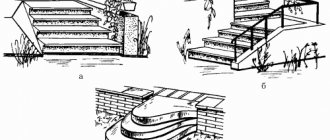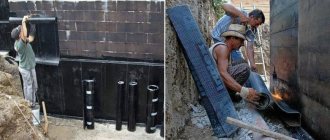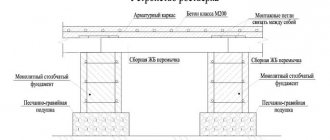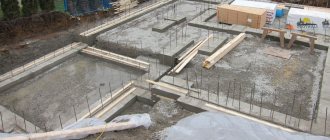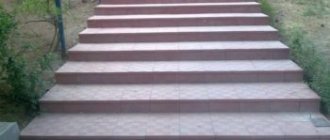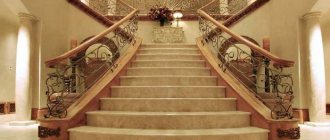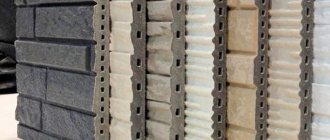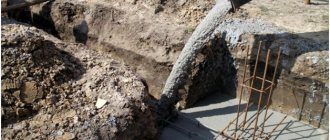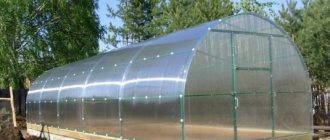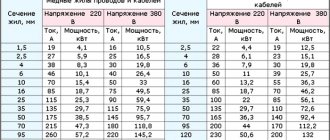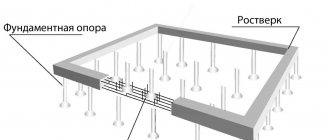Home-Catalog of grave monuments
Landscaping a place of memory is an opportunity to express grief and sadness, to perpetuate gratitude and love in stone, and to note the personal qualities and merits of the deceased. The individual design of a memorial composition consists of a number of details:
- Form.
- Size.
- Color.
- Configuration.
- Decorative elements.
The catalog of grave monuments presents many options, grouped by category and type. Thanks to this, you will quickly and easily find the most suitable solutions in terms of appearance, practicality and price.
The advantages of such designs
In general, artificial stone for foundations has been used for quite a long time. Rubble structures formed the basis of a wide variety of buildings associated with the very heavy weight of the walls. The material in question has only one “minus”, which is the complexity of the installation process.
At the same time, it has many advantages:
- Excellent strength indicators. However, this indicator depends on what kind of stone is used.
- Good frost resistance. It makes it possible to effectively withstand more than 300 freezing and thawing cycles.
- During the construction of the foundation, the use of local materials is allowed. They are formed during the processing of rocks of mountain origin.
- Moisture resistance, thanks to which the material is not afraid of the negative effects of groundwater.
- Relatively low cost. This way you can save a lot of money.
At the same time, if you are going to build a high-quality foundation, then the components should not have any special defects. During the decorative finishing process, a strength test is also performed.
Advantages and disadvantages of a rubble stone foundation
The advantages of rubble stone include the following factors:
- With a high base, such a foundation will have an excellent appearance, which will avoid cladding.
- Compared to strip foundations, rubble foundations are significantly less hydroscopic: natural stone practically does not absorb moisture, and, therefore, can last for many decades.
- The high compressive strength of rubble stone allows the foundation to be strong even when using not very strong grades of concrete.
- Rubble stone foundations are not attractive to moss, fungi, mold, insects or animals.
- If there is a stone quarry nearby, a rubble foundation can be very attractive from an economic point of view.
- A rubble stone foundation can easily withstand sudden temperature fluctuations, and can also withstand more severe vertical and horizontal loads than a simple strip foundation.
The disadvantages of constructing a foundation made of rubble stone include the following factors:
- The cost of natural stone is quite high, and in some cases the final cost of the foundation (including labor, concrete and reinforcement) becomes too high.
- Few specialists are engaged in creating a foundation from rubble stone, so finding workers will be very problematic.
- A foundation made of rubble stone cannot simply be “poured” from a concrete mixer, as when creating a strip foundation. The time costs will be very noticeable, and this cannot but affect the cost of constructing such a foundation.
- When creating a rubble stone foundation yourself, difficulties arise when adjusting the stones. Rubble stone does not always have a convenient shape, so it becomes necessary to select the stone or additionally process it before laying.
Types of masonry
To begin with, it should be noted that stone laying during the construction of the foundation is carried out according to the principle of installing individual components using mortar. One should also not neglect a certain algorithm of actions. Typically, masonry takes on its own weight and the entire mass of the building’s structural elements above it. In addition, it also has thermal insulation functions. Thus, communication systems will be additionally protected from exposure to negative temperatures.
The construction of the foundation can be carried out using various technologies. The main ones are the following: under the blade, under the bay and with vibration compaction. According to the first option, when constructing the base, the rows are arranged horizontally. Their thickness in this case cannot exceed 25cm. The technology allows seams not exceeding 15 mm. The rows themselves vary in thickness, but the length should remain the same.
- We start with the first row, which is performed dry, that is, without using any solutions. In this case, large cobblestones are most often used.
- As for the second layer, it is performed on a fresh mixture. After this, it must be carefully settled using the tamping method.
- It is also important that the empty spaces between the components are filled with crushed stone. After this, they are filled with a liquid composition. In this case, the final clutch will be of high quality.
- Next, the laying is done in rows using plastic mortar. Don't forget to re-tie your stitches.
The “under-flood” technology involves making steep side planes of the trench. As for the lower part, it needs to be leveled as carefully as possible. After this, you can dry install the rubble layer on the crushed stone. If we talk about the thickness of such a layer, then it should be approximately 30 centimeters. Further finishing of the foundation with stone is carried out similarly to the previous method. There is only one difference, which is that the liquid mixture is poured above the level of the rock formation. This type of masonry is appropriate when working on soils with a low level of subsidence.
If a special vibration compaction is used, it becomes possible to increase the strength indicators by up to forty percent. As part of this method, the bottom row is laid out dry; it is necessary to fill the voids with crushed stone. Upon completion of all this, the working surface is covered with a solution. Then they take a special vibrator and use it to compact it. Only after absorption is complete can the process be considered complete.
What can be tiled with granite tiles?
Let's consider the purpose of granite tiles. It can be used as a blind area around the monument if the foundation is poured at ground level, or rises a maximum of 3 cm above it. In this case, our installers first lay the tiles on the concrete, and then install the monument structure itself on the tiles. Another option for using granite tiles is to line the top deck and side walls of gray concrete. This is done if the foundation is raised above the ground from 10 to 30 cm and higher up to the required height. Then they first lay the top tile, and then use a special granite glue to sculpt the side tile vertically.
Performing basic work
You can start building a rubble foundation when you have a lot of free time and have decided which stone to choose. The foundation can be erected either with or without the use of removable formwork. It is also necessary to install waterproofing made from roofing felt.
So, the first stage of such work. To begin with, marking work is carried out. As for the cord, it must be pulled from the outside of the building being built. In order to carry out leveling work, diagonals are measured. It is best that they have equal parameters. After this, a trench is dug according to the markings, the depth of which should be below the soil freezing line. As for the width, it is determined by the thickness of the walls. Here you can leave a margin of about ten centimeters.
After this, making a stone foundation with your own hands, you can choose one of the masonry methods and carry it out. Don't forget to tie the stones securely. After the stone elements have been laid, the zero level can be filled with concrete. Next, take the pegs and place them in the corners. They are designed to help determine the extreme points. Upon completion, a cord is pulled along the perimeter. In addition, it is on it that the rest of the base is laid out.
Production
has production facilities that allow it to cope with any volume within a specified time frame, and the selection of natural stone in the catalog will satisfy even the most demanding client.
It is important to know that the service life and appearance of the plinth largely depend on adherence to cladding technology, in which an important step is sealing the masonry joints. Therefore, these works should be entrusted to the professionals of the Isakidis Granites company, whose portfolio includes dozens of completed projects for the finishing of facades, plinths and other elements of the external decoration of the building.
Pouring concrete
Well, if the cushion is poured, the box of reinforcement is tied, the formwork is in place, then you can start pouring the foundation. The main rule here is solid casting, i.e. All of your foundation trenches must be filled at one time.
Of course, in this case it is necessary to use a concrete mixer or a ready-made solution, and also use the help of a team of friendly assistants. Concrete is poured into the trenches in buckets, you can do this in layers - alternately pour layers to the top of the formwork.
If the depth of the trench is more than 60 cm, then backfilling is allowed: after laying the first layer of concrete, large granite blocks, large pieces of broken old concrete or any other dense stones are placed in the trench.
When you start pouring the formwork, for better shrinkage of the concrete you need to tap the outer sides of the formwork with a trowel. The ideal option here is to use a deep vibrator, but tapping will do. Finally, so that the surface of the foundation is smooth, go over it with a trowel.
It is important to know!
There are cases when, in the presence of a box of reinforcement, trenches are filled with a break of seven to ten hours. This is allowed. However, the places where already poured and fresh concrete will be joined must be wetted.
Well, the foundation for your “fortress” is ready. Now we need to wait until the concrete “sets” completely, and in the meantime, bring building materials to the site.
If the work was carried out in dry, hot weather, then the poured structure must be periodically moistened with plenty of water at first. The ideal period for drying the foundation is 24 days.
Video. Slab foundation
Video. Strip foundation
Articles about the foundation
- Types of foundations
- Wooden column foundation
- Brick columnar foundation
- Columnar foundation made of bored piles
- Solid slab foundation
- Columnar foundation
- Screw foundation
- Strip-column foundation
- Influence of soil type on the choice of foundation design
- Choosing material for the foundation of the house
- Construction of a foundation for a frame house
- Construction of a frame house
- back to the section “Building a house with your own hands”
Preparing the foundation surface for lining it with natural stone
Facing the foundation with natural stone requires proper preparation of the surface, which can be brick or concrete. This does not change the methods of preparation.
Advice. All work on preparing the foundation of a building for finishing is carried out with high quality, since it helps to get rid of moisture inside the room and is fundamental to any home.
What you need to think about: The temperature regime of the room and the percentage of air humidity depend on how the foundation is built and how the finishing is done. What can be the consequences of improper insulation and cladding of the foundation with natural stone after it:
- Air humidity will be high. This will cause the formation of dampness on the surface of the walls or ceiling. The result is the formation of mold, which is quite difficult to combat.
Where to start:
- Initially, a trench is dug along the entire perimeter of the building, which reaches 20-30 cm in depth and 50-60 cm in width. This choice depends on the number of storeys of the house.
- After it is dug, gravel is poured into it, which, due to its properties, is capable of draining water from the foundation quite quickly and easily.
Advice. To increase the strength of the entire structure, it is connected to the main foundation with a reinforcement mesh.
- You can also use fiberglass mesh or another metal.
- An analysis of its condition is carried out on the foundation surface itself. If there are any defects or irregularities, all of them must be eliminated. It is also worth filling all visible holes with plaster or concrete mortar.
- It is also worthwhile, after such work, to prime the surface itself with a special agent that repels moisture. All solutions of this type are usually applied to the surface with a simple brush or roller. To apply them correctly, there are special instructions according to which all actions are performed.
Thanks to the properties of these products, the water that gets under the finishing material is not absorbed on the surface of the foundation, but simply flows off and does not leave any traces.
Rules for wall decoration
Stone finishing is often recommended to be combined with interesting lighting.
This material can be used to decorate walls or facades at any time of the year. It is durable and is able to hide uneven walls, which eliminates the need for preliminary leveling.
When facing walls with natural stone, consider the following factors:
- Today, many designers use natural stone in their projects. It can be used to treat the entire wall or to highlight certain areas.
- To make the stone look attractive, we recommend using special lighting.
- Walls for cladding with such material must have additional characteristics. The finishing design is not entirely standard, which can cause complications.
- When using stone in a room without an additional light source, the effect of being in a natural room is created.
- Indoor plants grow in many rooms. The correct combination of such plants with cladding will significantly improve the effect. In this way, you can create a natural design style. The main thing is that the plants are natural and do not stand out from their surroundings.
- Good materials to combine with natural finishes are glass or alloys. A good solution would be to use glass vases, tables or other things in the room. For more information about finishing rules, watch this video:
Keep in mind that it is better not to use such material for finishing small rooms. This will only increase the cramped effect. It is better to use this cladding for large rooms with high ceilings.
It would not be the best solution to use such a finish for cladding living rooms, but the material is ideal for a hallway, kitchen or bathroom.
Advantages and main properties of natural agglomerate
For foundation cladding it has excellent properties and characteristics. Due to the density of the structure of such material, the finish will be durable. Characteristics:
- There are some types whose structure is porous, but the strength and reliability remain at a high level. This type of natural stone has excellent heat capacity and is able to protect the foundation from the penetration of cold air masses.
- Natural material has one main advantage - it is environmentally friendly and does not harm human health.
Advice. When purchasing natural agglomerate, you must ask the seller for certification documents that confirm that the stone does not emit radiation.
Facing foundations with natural stone:
- Moisture-resistant, since the surface of such a material is not able to absorb moisture. It may simply change its shade for a while, but after complete drying, the design remains original.
- Practical because it does not require any special care for the surface, which does not absorb dirt. For cleaning, it will be enough to use dry rags without abrasives or other detergents.
- Durable, there is no set time limit for the use of natural agglomerate, since it can adapt to any climatic conditions.
- Durable and reliable. It is able to withstand quite significant loads, both mechanical and physical.
- Wear-resistant. Throughout the entire period of operation, the external design of the surface of natural stone, as well as its structure, do not change.
- Frost-resistant, as it easily tolerates very low temperature conditions without deformation.
- Withstands fairly high temperatures, while the surface of natural stone does not heat up, and the density of the material structure also remains unchanged.
- It is worth noting that the stone does not burn and retains heat very well.
Advice. The natural agglomerate itself is quite cold, and in order to provide warmth at the base of the building, it will be necessary to insulate it.
- For this purpose, expanded clay, crushed stone, dry seaweed and other insulating materials are used, which after installation are filled with concrete mortar.
Installing natural stone yourself is very quick and easy. Only the surface of the foundation is pre-prepared with high quality.
